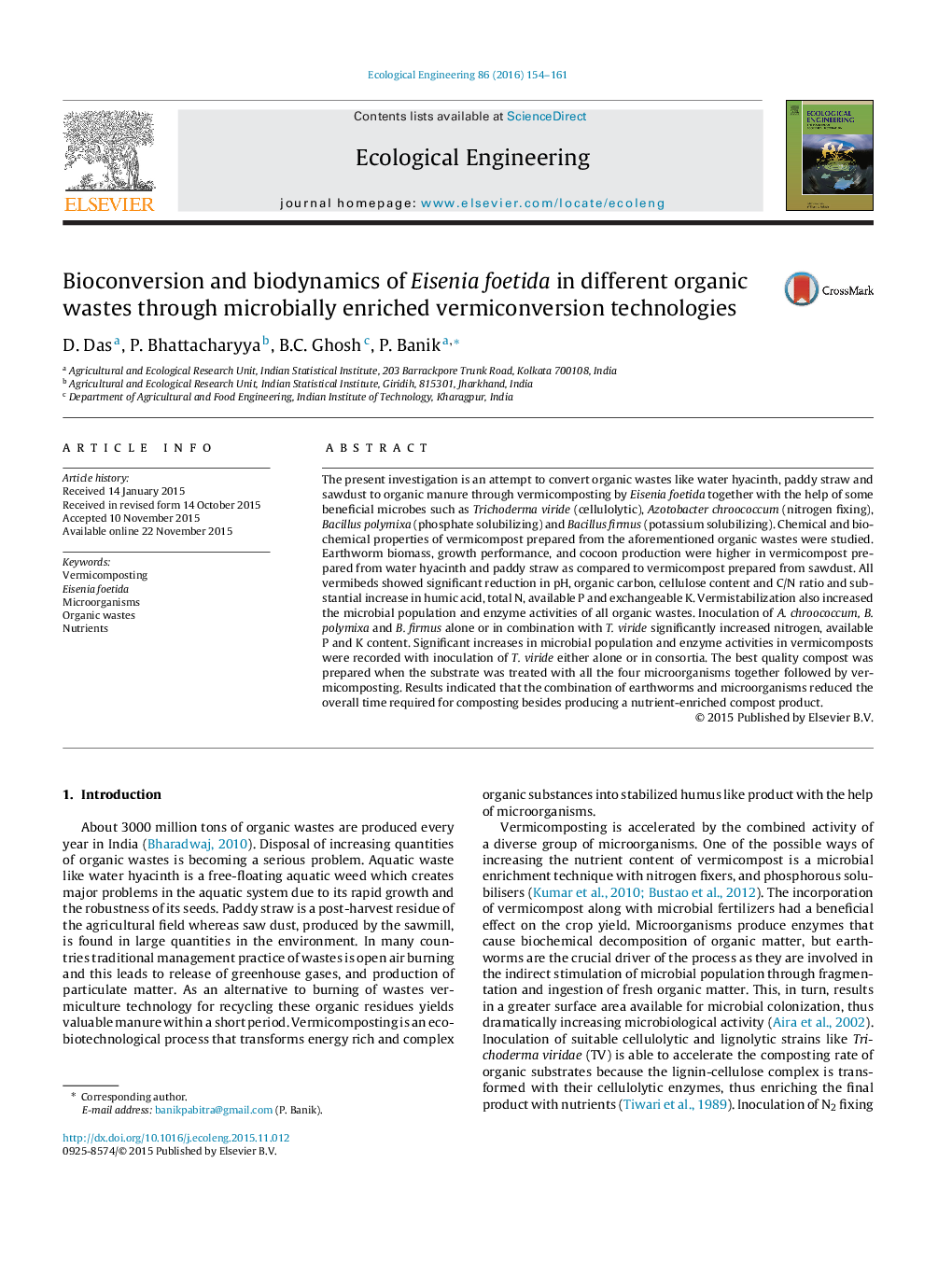| Article ID | Journal | Published Year | Pages | File Type |
|---|---|---|---|---|
| 4388926 | Ecological Engineering | 2016 | 8 Pages |
•Growth and population of E. foetida were influenced by different feeding materials.•Inoculation of T. viride either alone or in consortia increased microbial properties.•All vermibeds showed reduction in pH, organic carbon, cellulose content, C:N ratio.•Vermicomposting increased humic acid, total N, available P and exchangeable K.•Vermicompost prepared from water hyacinth and paddy straw is better than sawdust.
The present investigation is an attempt to convert organic wastes like water hyacinth, paddy straw and sawdust to organic manure through vermicomposting by Eisenia foetida together with the help of some beneficial microbes such as Trichoderma viride (cellulolytic), Azotobacter chroococcum (nitrogen fixing), Bacillus polymixa (phosphate solubilizing) and Bacillus firmus (potassium solubilizing). Chemical and biochemical properties of vermicompost prepared from the aforementioned organic wastes were studied. Earthworm biomass, growth performance, and cocoon production were higher in vermicompost prepared from water hyacinth and paddy straw as compared to vermicompost prepared from sawdust. All vermibeds showed significant reduction in pH, organic carbon, cellulose content and C/N ratio and substantial increase in humic acid, total N, available P and exchangeable K. Vermistabilization also increased the microbial population and enzyme activities of all organic wastes. Inoculation of A. chroococcum, B. polymixa and B. firmus alone or in combination with T. viride significantly increased nitrogen, available P and K content. Significant increases in microbial population and enzyme activities in vermicomposts were recorded with inoculation of T. viride either alone or in consortia. The best quality compost was prepared when the substrate was treated with all the four microorganisms together followed by vermicomposting. Results indicated that the combination of earthworms and microorganisms reduced the overall time required for composting besides producing a nutrient-enriched compost product.
